A buyer persona is a research-based profile that represents a segment of your target audience. It‘s more than demographics; it’s a detailed character sketch of your ideal customer — complete with their behaviors, motivations, goals, and pain points that influence buying decisions.
In this piece, I‘ll explain what a buyer persona is and show you how to combine different research methods to create detailed personas. In just a few thoughtful steps, you’ll walk away with consumer stories and profiles representing your customer base.
Table of Contents
- What is a buyer persona?
- Why are buyer personas important to your business?
- How to Create a Buyer Persona in 5 Steps
- How to Find Interviewees for Researching Buyer Personas
- How to Use Buyer Personas in Your Marketing
- Buyer Persona Examples
- FAQs About Buyer Personas
What is a buyer persona?
A buyer persona is a research-based profile that represents a segment of your target audience. Think of it as a detailed character sketch of your ideal customer — complete with demographics, behaviors, motivations, goals, and pain points that influence their buying decisions.
Also known as marketing personas, customer personas, or audience personas, these profiles go far beyond basic demographic data. While a simple market segment might tell you “women aged 25-34,” a buyer persona named “Marketing Manager Maria” reveals she's a 32-year-old B2B marketing professional who struggles with proving ROI, prefers video content, and makes purchasing decisions based on peer recommendations and case studies.
The strongest buyer personas are based on market research and insights you gather from your existing and potential customer base through surveys, interviews, and data analysis.
What Buyer Personas Include
- Demographics: Age, location, income, education, job title
- Psychographics: Values, interests, lifestyle choices
- Behavioral patterns: Preferred channels, content consumption habits, buying triggers
- Goals and challenges: Professional objectives and pain points
- Decision criteria: What factors influence their purchasing choices
What Buyer Personas Are NOT
- Simple demographic profiles or market segments
- Individual customer profiles (they represent groups)
- Static documents that never change
- Assumptions without research backing
According to recent studies, 71% of companies that exceed revenue goals have documented buyer personas, yet many businesses still confuse them with basic customer demographics. The key difference? Buyer personas include the “why” behind customer behavior, not just the “what.”
.webp?width=650&height=487&name=basic%20demographic%20profile%20vs.%20detailed%20buyer%20persona%20(2).webp)
What type of business needs to create buyer personas?
All types of businesses should create (and will benefit from) buyer personas because every business needs customers or clients to be successful. Whether you're B2B, B2C, SaaS, e-commerce, or service-based, buyer personas help you understand and reach your ideal customers.
What is a negative buyer persona?
While a buyer persona represents your ideal customer, a negative — or exclusionary — persona represents who you don't want as a customer.
Your negative personas can include:
- Customers who are too advanced for your product or service
- Potential customers who are just too expensive to acquire
- People who only engage with your content to gain knowledge
- Price-focused shoppers with no brand loyalty and high return rates
Whatever the exclusion factor is, the knowledge is valuable because it helps you narrow down your strategic execution so that your inputs directly contribute to your results.
Why are buyer personas important to your business?
According to our research, most marketers lack crucial information about their audience, so they struggle to make personalized content.
Creating detailed buyer personas isn‘t just a nice-to-have — it’s a critical driver of marketing success. Companies with documented buyer personas see tangible results across every marketing metric.
1. Drive personalization at scale.
Personalization is the main reason your buyer personas are essential, and it's only possible when you truly understand your audience. Customers appreciate personalization, as 96% of marketers say it increases the likelihood of buyers becoming repeat customers, and 94% say it increases sales.
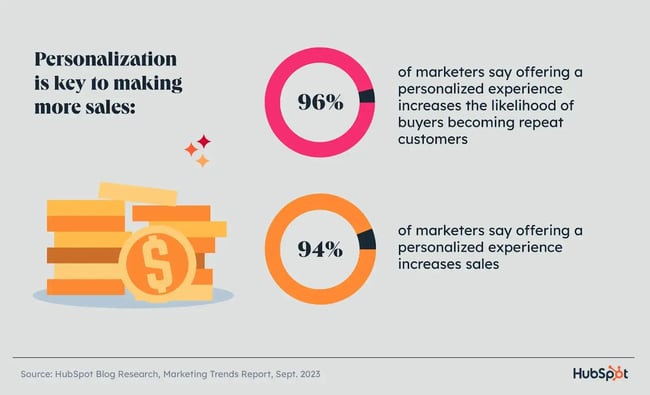
Those stats represent my experience as a consumer: I'm more likely to be a fan of and give repeat business to brands that know what I like and cater to my interests. For example, a brand email that lets me know a product on my wishlist is on sale will, more likely than not, turn me into a loyal and appreciative customer.
When you know your audience's specific pain points and preferences, you can craft messages that resonate instead of generic content that gets ignored.
2. Improve lead quality and conversion rates.
Buyer personas help you attract the right prospects from the start. By understanding your ideal customer's journey, you can create targeted content for each stage, resulting in:
- Higher quality leads entering your funnel
- Improved lead scoring accuracy
- Shorter sales cycles as prospects arrive better educated
3. Align marketing and sales teams.
When everyone works from the same customer playbook, magic happens. Buyer personas create a shared language between teams, ensuring marketing generates leads that sales actually wants. This alignment leads to more effective handoffs and consistent messaging throughout the customer journey.
4. Maximize marketing ROI.
Stop wasting budget on channels your audience doesn't use. Buyer personas reveal where your customers spend time online, what content formats they prefer, and which messages motivate action. Companies using personas are 2x more likely to exceed their revenue goals.
In fact, marketers who offer customers a personalized experience are 215% more likely to say their marketing strategies are effective than those who don't.
5. Guide product development.
Beyond marketing, personas inform product roadmaps by highlighting unmet customer needs. Extensive research into your target customer helps you with your product development process. You'll know what your ideal customer experiences on a day-to-day basis, which can inspire innovative improvements to your product.
So, for example, say I sell kitchen utensils. My buyer persona research tells me my ideal customer lives in the South, where grilling is common. I would likely find success developing and offering grilling utensils or improving my existing offerings to work in indoor and outdoor environments.
6. Enhance targeted marketing strategies.
Creating detailed buyer personas gives you the ability to craft content and messaging that truly connects with your audience. When you dive into each persona‘s preferences and behaviors, you’re able to tailor your marketing to specific segments in ways that feel both relevant and effective.
For example, instead of sending nurturing emails to your entire database, you can segment by buyer persona and use a tool like Marketing Hub to tailor messaging to what you know about each one.
I‘ve found that combining personas with lifecycle stage data works wonders for mapping out and creating highly specific content. When you align your messaging with where your audience is in their journey, it just clicks. If you’re interested in trying this, a content mapping template is a great resource to explore.
I run Breaking the Blueprint (BtB), a blog column for minority business owners and entrepreneurs, and the target audience is more specific than the general HubSpot Blog (Black entrepreneurs vs. entrepreneurs as a whole, for example).
Since the target audience is unique, I conducted buyer persona surveys to learn more about their specific interests, needs, and pain points to make sure the content I publish is much more likely to make an impact and be helpful.
Don‘t forget about negative personas, either. They’re a game-changer for cutting out unproductive leads. If you identify and exclude those unlikely to convert — like people engaging only for knowledge or those too advanced for your offering — you can zero in on the prospects that truly matter, saving time and boosting your ROI.
How to Create a Buyer Persona in 5 Steps
High-quality buyer personas are based on concrete facts about your audience's interests, behavior, and demographics.
Building accurate buyer personas requires systematic research and the right tools. Start with our free buyer persona templates to organize your findings as you work through these steps.
The best way to create your buyer personas is through research, surveys, and interviews — all with a mix of customers, prospects, and those outside your contacts database who align with your target audience.
Step 1: Gather quantitative data.
Start with the data you already have. Your analytics platforms hold a goldmine of behavioral insights:
Website analytics: Check your website traffic analytics to identify useful information about your existing audience, such as demographics, which pages attract the most visitors and why, and what marketing campaigns drive the most traffic.
CRM data: Analyze customer demographics, purchase patterns, and lifetime value. Look through your contacts database to uncover trends about how certain leads or customers find and consume your content.
Social media insights: Understand platform preferences and engagement patterns. Social listening can reveal what people talk about online in relation to what you offer, your competitors, and the industry as a whole.
Email marketing metrics: Track what content drives opens and clicks for different segments.
Sales team feedback: Consider your sales team's feedback on the leads they interact with most. What generalizations can you make about the different types of customers you serve best?
Step 2: Conduct qualitative research.
Numbers tell what happened — conversations reveal why. Plan to interview 3-5 people per persona through:
Customer interviews: Talk to your best customers about their journey. Your existing customer base is the perfect place to start your interviews. They've already purchased and engaged with your company and exemplify your target persona(s).
Don't just talk to people who love your product and want to spend an hour gushing about you. Customers who are unhappy with your product will show other patterns that will help you form a solid understanding of your personas.
Sales team insights: Your sales reps hear objections and motivations daily.
Support ticket analysis: Analyze customer feedback and support requests. Common questions reveal knowledge gaps.
Social listening: Monitor how your audience discusses challenges online.
Focus groups: Gather groups of prospects or customers for deeper discussions.
Pro tip: Offer a small incentive like a gift card to boost participation. Make it clear these aren‘t sales calls — you’re genuinely seeking to understand their experience.
When I created personas for Breaking the Blueprint, I discovered helpful and practical methods for gathering the information you need to develop your personas (you can also further your knowledge on this topic through the free HubSpot Academy course).
If you're having direct conversations, I find it helpful to include descriptive buzzwords and mannerisms you pick up on. This can help your team identify certain personas when talking to prospects.
Information to gather:
- Demographic info: Age, gender, education, location, etc., gives you a foundational understanding of who your persona is (note: make this optional unless pivotal, as some people prefer privacy)
- Behaviors: Needs, purchasing behavior, brand loyalty, and decision-making process
- Psychographic information: Lifestyle, values, and interests
- Goals and objectives: How your product or service relates to what they're attempting to achieve
- Pain points and challenges: Issues your persona faces and how your product is the solution
- Industry/professional information: Job title, responsibilities, tools used, industry, and company size
Step 3: Identify patterns and segments.
Once you‘ve gone through the research process, you’ll have a lot of meaty, raw data about your potential and current customers. Look for common themes in your research:
- Shared challenges or goals
- Similar objection patterns
- Common trigger events for purchase
- Preferred information sources
Most businesses need 3-7 personas. Start with 2-3 core personas representing your highest-value segments.
Identify patterns and commonalities in your research. Answers to your interview questions, information submitted in lead forms, and insight from the sales team will all help you understand how to be the most relevant to your persona so you can draw them in.
Step 4: Build your persona profiles.
It's time to start building your persona. Transform your research into detailed profiles that teams can actually use.
HubSpot's free Make My Persona generator, as well as our free downloadable persona templates, can help you organize the information you‘ve gathered and share it with relevant stakeholders so everyone can develop an in-depth understanding of the people they’re targeting at work.

Essential elements for each persona:
- Demographic snapshot: Age, role, income
- Day-in-the-life scenario: What their typical day looks like
- Top 3 goals and challenges: What they‘re trying to achieve and what’s holding them back
- Common objections and how to address them: What concerns they raise
- Preferred content types and channels: Where and how they consume information
- Actual quotes from interviews: Real words from real customers
Give each persona a memorable name and photo to make them feel real to your team (e.g., Finance Manager Margie, IT Ian, or Landscaper Larry).
First, fill in your persona's basic demographic information:
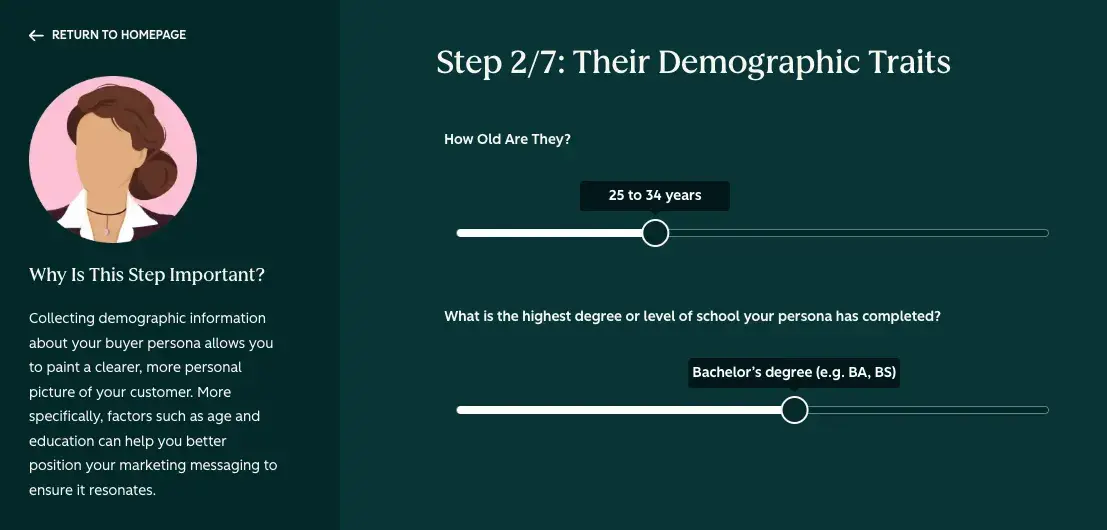
Second, outline what you‘ve learned about your persona’s motivations:
This is where you'll distill the information you learned from digging into the “why” during your research. What keeps your persona up at night? Who do they want to be? Most importantly, tie that all together by telling people how your company can help them.
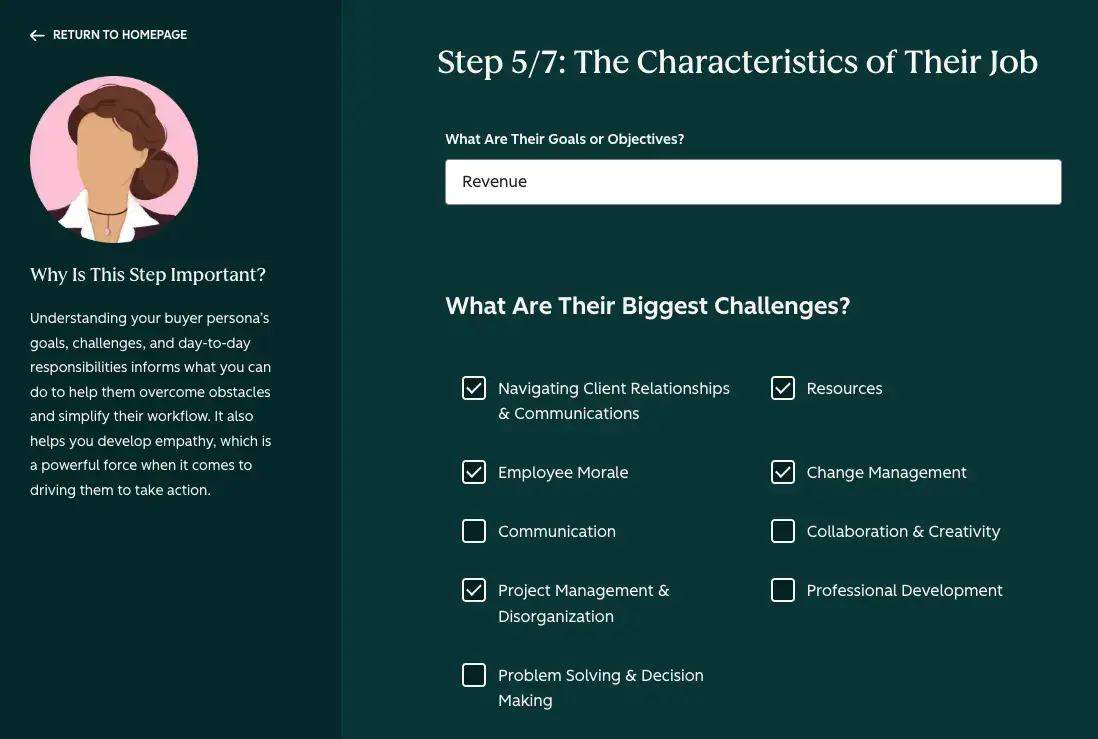
Third, help your sales team prepare for conversations:
The personas you create can be even more impactful when you include real quotes from interviews that exemplify what your audience is concerned about, who they are, and what they want. This is where the buzzwords and mannerisms you might have noted during interviews can come in handy.
You can also create a list of the objections they might raise so your sales team can prepare to address those during conversations with prospects.
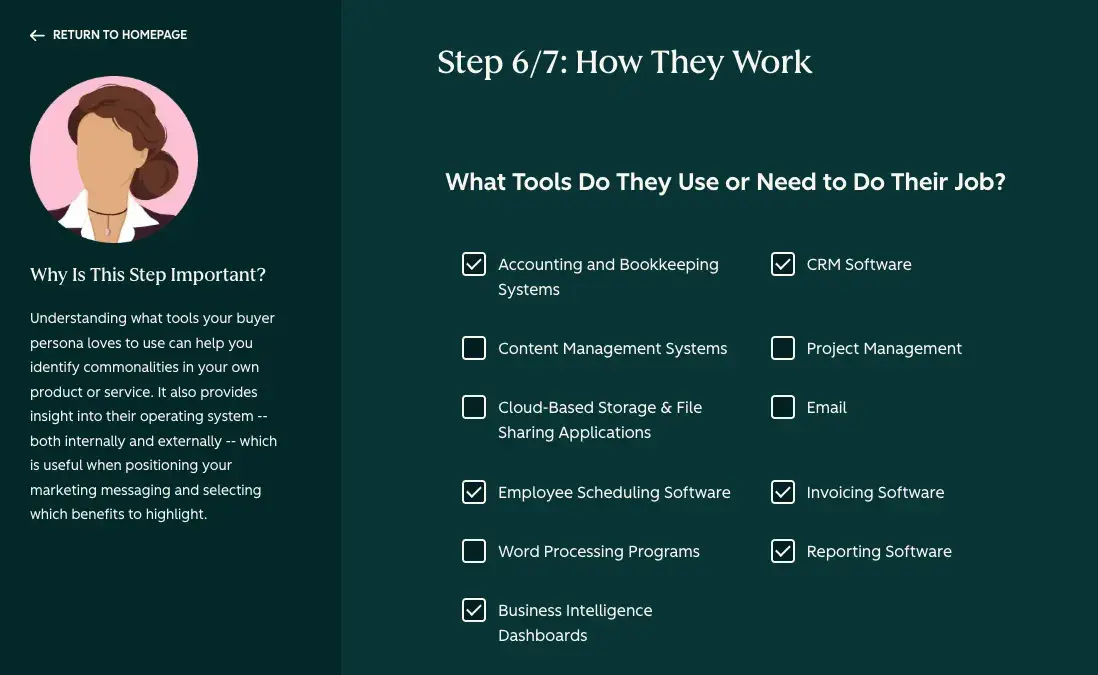
Finally, craft messaging for your persona:
Tell people how to talk about your products/services with your persona. This includes the nitty-gritty vocabulary you should use and a more general elevator pitch that positions your solution in a way that resonates with your persona.
This will help you ensure everyone in your company speaks the same language when conversing with leads and customers.
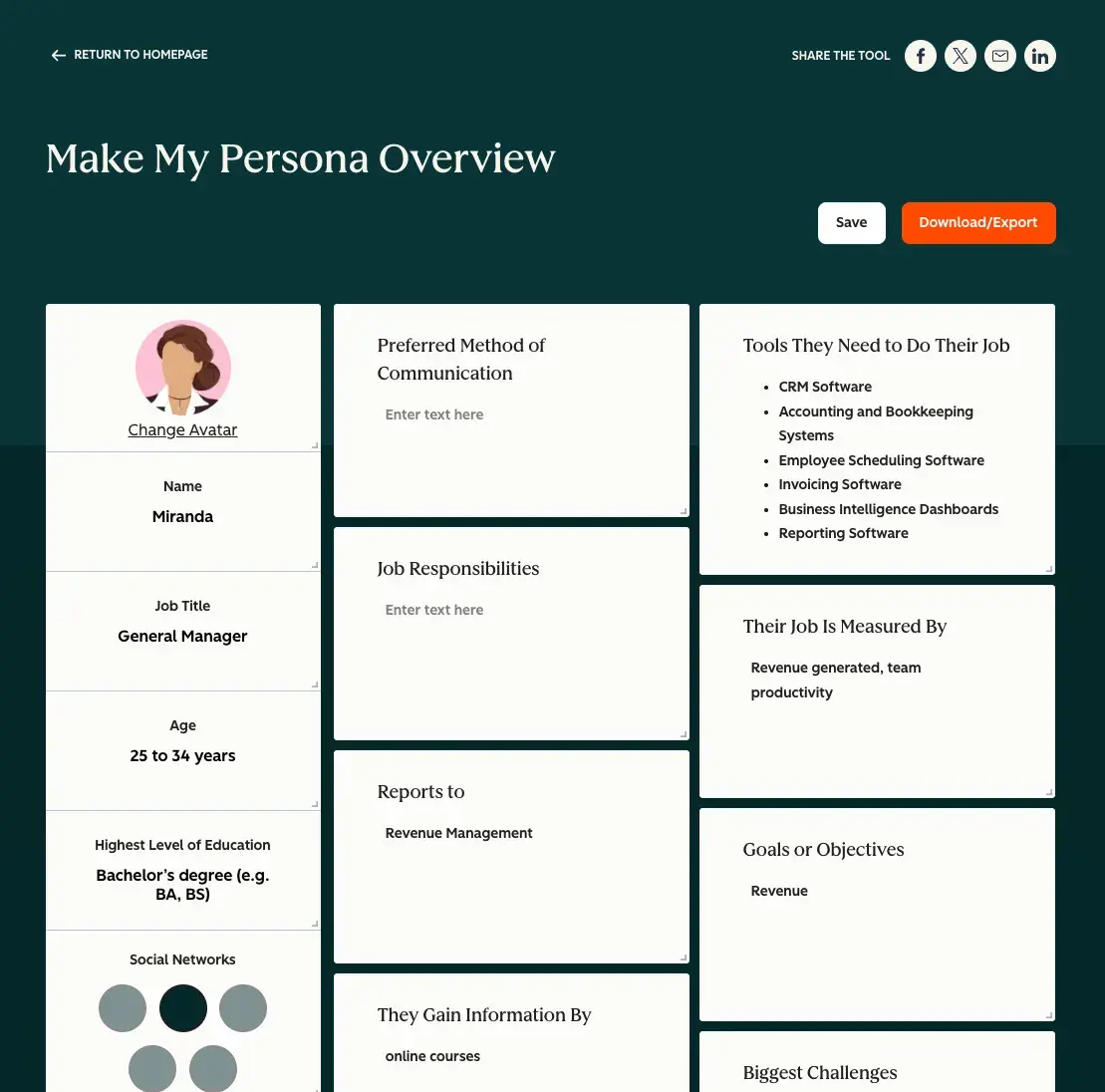
And if you're a HubSpot customer, you can easily add your persona to Marketing Hub by following this step-by-step setup guide.
Step 5: Validate and activate.
Test your personas against real customer behavior:
- Create targeted campaigns for each persona
- Track engagement and conversion differences
- Survey customers to confirm accuracy
- Update personas quarterly based on new data
Remember: personas are living documents. Your buyer personas are essential, and so is regularly reviewing and updating them if necessary. I'd recommend an annual review to stay on top of your target audience and how their preferences evolve.
How to Find Interviewees for Researching Buyer Personas
One of the most critical steps to establishing your buyer persona(s) is finding people to speak with to understand who your buyer persona is. There are a few sources I recommend tapping into.
1. Use your current customers.
Your existing customer base is the perfect place to start your interviews. They've already purchased and engaged with your company and exemplify your target persona(s).
Another benefit to current customers is that you don't always need incentives (e.g., gift cards) because they like being heard. Interviewing gives them a chance to tell you about their challenges and what they think of your product. Your customers can then have an impact on the products they use.
Involving them in interviews can also deepen their loyalty to your company. When you reach out, always be clear that your goal is to get their feedback and that you highly value it.
2. Use your prospects.
You can also interview people who have not purchased your product and know little about your brand. Your prospects and leads are great options because you already have their contact information.
I recommend using the information you do have about them (i.e., anything you've collected through lead gen forms or website analytics) to figure out who fits your persona.
Tools like Enlyft can help you create custom buyer persona profiles and match your prospects to them to make it easier to find the people you need to talk to.
3. Use your referrals.
Your existing network (coworkers, existing customers, social media contacts, etc.) is a great resource for finding people you'd like to interview and getting an introduction.
You‘ll likely get some high-quality interviews with this method, but volume can be lower. Referrals are especially beneficial if you’re heading into new markets or starting fresh without leads or customers.
If you don't know where to start, I suggest searching on LinkedIn for people who may fit into your target personas and seeing who you share connections with, and reaching out to them for introductions.
4. Use third-party networks.
Third-party networks can help you recruit interviewees completely removed from your company. For example, UserTesting.com lets you run remote user testing. You just have less control over the sessions you run.
Tips for Recruiting Buyer Persona Interviewees
As you reach out to potential buyer persona interviewees, here are my tips for improving response rates and running smooth interviews:
Decide how many people you need to speak to: I wish I could give a set answer, but the number of people you need to interview for a well-rounded persona will vary. I recommend starting with at least three to five for each persona you create and make sure it‘s a mix of customers, prospects, and people who don’t know your company. If you reach a point where you can predict what an interviewee is about to say, you probably have a good enough sample and can call it.
Create your questions beforehand: After the small talk, you'll jump into your questions. You want to have your persona interview questions ironed out ahead of time for a seamless interview process; otherwise, you risk looking disorganized and losing attention.
Use incentives: Incentives give people a reason to participate, especially those who don't have a relationship with you. A simple gift card is an easy option.
Make it clear that it isn't a sales call: This is especially important when dealing with non-customers who are weary of getting stuck on a sales call. Explain that you're researching and want to learn from them, not sell to them.
Make it easy to say yes: Take care of everything for your interviewees so they only have to say yes. Suggest times, and be flexible so they can pick what works best for them.
How to Use Buyer Personas in Your Marketing
Creating buyer personas is just the beginning. The real value comes from actively using them to guide every marketing decision. Here's how to put your personas to work across channels.
Content Marketing Applications
Map your content calendar to persona needs:
- Blog topics: Address each persona's specific challenges
- Content formats: Match preferences (video for visual learners, detailed guides for researchers)
- Messaging angles: Lead with benefits that matter to each persona
- SEO strategy: Target keywords each persona actually searches
Email Marketing Segmentation
Transform generic blasts into targeted conversations:
- Segment lists by persona characteristics
- Customize subject lines to persona pain points
- Adjust email frequency based on engagement preferences
- Create persona-specific nurture tracks
Tools like Marketing Hub make it easy to segment your audience and deliver personalized messaging at scale.
Paid Advertising Optimization
Stop wasting ad spend on the wrong audience:
- Build lookalike audiences from persona data
- Write ad copy that speaks to specific motivations
- Choose platforms where each persona spends time
- Test creative variations by persona
Sales Enablement
Arm your sales team for better conversations:
- Create persona cheat sheets with common objections
- Develop talk tracks for each persona type
- Share trigger phrases that resonate
- Build persona-specific case studies
Quick implementation tip: Start by picking one channel and one persona. Test persona-based approaches against your current strategy. Once you see results, expand to other channels and personas.
The goal isn‘t perfection — it’s progress. Even basic persona implementation typically improves engagement rates by 10-20%.
Buyer Persona Examples
I'll share some examples of completed buyer personas so you can get a better understanding of what they look like. Seeing buyer personas in action helps bring the concept to life.
B2B Buyer Persona Example
The image below is a B2B buyer persona for someone who works in HR. The persona paints a clear picture of the target customer's struggles and how the business can best meet those needs.
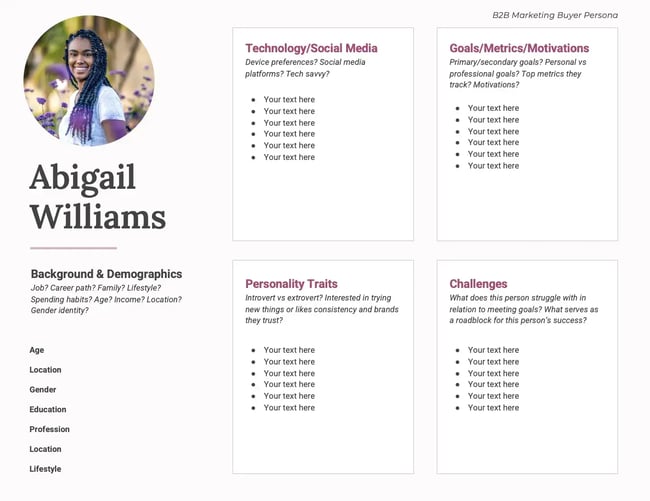
In this case, HR recruiting tools streamline processes, make recruiting easier, and help HR expertly manage their overall job duties.
Background: HR Manager at a mid-sized company
Demographics: Age 35-45, Bachelor's degree in HR or Business, $70-90K salary
Goals: Streamline recruiting process, improve candidate quality, reduce time-to-hire
Challenges: Limited budget, managing multiple job openings simultaneously, proving ROI to leadership
Preferred content: Case studies, ROI calculators, how-to guides
How this persona influences marketing:
- Content focuses on efficiency gains and time savings
- Lead nurturing includes budget-friendly options
- Sales enablement emphasizes quick implementation
B2C Buyer Persona Example
The image below is a B2C buyer persona for a music streaming service.

Based on this persona, a streaming service would want to ensure that it has a user-friendly mobile app, sends new music notifications, and makes it easy for users to discover new music related to their interests and share content with friends.
B2B SaaS Buyer Persona: “Enterprise Emma”
Background: VP of Operations at a 500+ employee company
Demographics: Age 38-45, MBA, $150K+ salary, reports to C-suite
Goals: Streamline operations, reduce software sprawl, prove ROI
Challenges: Complex approval process, integration with legacy systems, change management
Preferred content: ROI calculators, peer case studies, analyst reports
How this persona influences marketing:
- Content focuses on efficiency gains and cost savings
- Lead nurturing includes multiple stakeholder resources
- Sales enablement emphasizes enterprise security features
B2C Ecommerce Persona: “Sustainable Sarah”
Background: Urban professional who prioritizes ethical consumption
Demographics: Age 28-35, college-educated, $60-80K income
Goals: Support sustainable brands, reduce environmental impact
Challenges: Verifying authenticity, justifying higher prices
Preferred channels: Instagram, email newsletters, brand blogs
How this persona influences marketing:
- Highlight sustainability certifications prominently
- Share behind-the-scenes content about ethical practices
- Partner with eco-conscious influencers
Negative Buyer Persona: “Discount-Only Dan”
Background: Price-focused shopper with no brand loyalty
Demographics: Various ages and incomes
Behaviors: Only engages during sales, high return rate, never purchases full price
Why to exclude: Low lifetime value, high service costs
How this persona influences marketing:
- Exclude from premium product launches
- Limit discount code distribution
- Focus retention efforts elsewhere
Remember: effective personas include enough detail to feel real but stay focused on information that drives marketing decisions. Update them regularly as you learn more about your customers.
For more buyer persona examples, check out our comprehensive guide.
FAQs About Buyer Personas
How many buyer personas should I create?
Most businesses need 3-7 personas representing their core customer segments. Start with 2-3 personas for your highest-value segments, then expand as needed. If you're new to personas, I recommend starting small — you can always develop more as you grow and learn.
The right number depends on your business complexity and target audience diversity. If you reach a point where personas start to overlap significantly, you probably have too many.
How often should I update my buyer personas?
I'd recommend reviewing your buyer personas at least annually to ensure they stay current with market changes and customer evolution. However, you should update them more frequently if:
- You launch new products or enter new markets
- You notice significant changes in customer behavior
- Your sales team reports new objections or patterns
- Industry trends shift dramatically
Schedule quarterly check-ins to review persona performance and gather new insights from customer interactions.
What's the difference between a buyer persona and an ideal customer profile?
While related, buyer personas and ideal customer profiles (ICPs) serve different purposes:
Buyer persona: A detailed profile of an individual decision-maker, including their personal goals, challenges, behaviors, and motivations. Personas are human-centric and focus on the “why” behind decisions.
Ideal customer profile: A description of the type of company that would benefit most from your product, including firmographic data like company size, industry, revenue, and tech stack. ICPs are company-centric and focus on organizational fit.
In B2B marketing, you often use both: your ICP identifies which companies to target, while your buyer persona helps you understand and reach the specific decision-makers within those companies.
Can small businesses benefit from buyer personas?
Absolutely. Small businesses often benefit even more from buyer personas because they have limited resources and need to be strategic about where they invest their marketing dollars.
Buyer personas help small businesses:
- Focus limited budgets on channels that actually work
- Create highly relevant content without a large team
- Compete with larger companies through personalization
- Build stronger customer relationships from the start
You don't need expensive tools or massive research budgets. Start with conversations with your best customers and use free templates to organize your findings.
How do I validate my buyer personas?
Test your personas against real-world behavior through:
Quantitative validation: Compare persona attributes against your CRM and analytics data. Do the patterns match? Track conversion rates for persona-based campaigns versus generic campaigns.
Qualitative validation: Share personas with your sales and customer service teams. Do they recognize these customers? Conduct follow-up interviews with new customers to confirm accuracy.
Market validation: Run A/B tests with persona-specific messaging versus generic messaging. Create targeted campaigns and measure engagement differences.
If your personas don't match real customer behavior, refine them based on what you learn.
What if my personas overlap?
Some overlap is natural, but excessive overlap suggests you need to consolidate or refine your personas. Ask yourself:
- Are the overlapping personas making meaningfully different decisions?
- Do they respond to different messages or use different channels?
- Would your marketing or sales approach differ between them?
If the answer is no, combine them into a single, more comprehensive persona. The goal is to have distinct personas that require different marketing approaches, not to create artificial divisions.
What is a negative buyer persona and why does it matter?
A negative buyer persona (also called an exclusionary persona) represents the people you don't want as customers. These might include:
- Customers who are too advanced for your product
- Prospects with unrealistic expectations
- People who are too expensive to acquire relative to their lifetime value
- Individuals who only engage with content for knowledge but never purchase
Negative personas help you:
- Avoid wasting marketing budget on the wrong audience
- Improve lead quality by filtering out poor fits
- Reduce customer acquisition costs
- Lower churn rates by not attracting mismatched customers
Creating negative personas is just as important as creating positive ones because they help you focus your limited resources on prospects most likely to become valuable, long-term customers.
Create Your Buyer Personas
Creating buyer personas helps you understand your target customers on a deeper level and ensures everyone on your team knows how to best target, support, and work with your customers.
When you use your personas to guide decisions, I don‘t doubt that you’ll see improvement in your reach, boost your conversions, and increase customer loyalty.
Ready to get started? Download HubSpot's free buyer persona template and begin building profiles that will transform your marketing effectiveness.
Learn more about what a persona is and how to create a buyer persona definition in under 100 words for quick team alignment.
Editor's note: This post was originally published in May 2015 and has been updated for comprehensiveness.
Buyer Personas


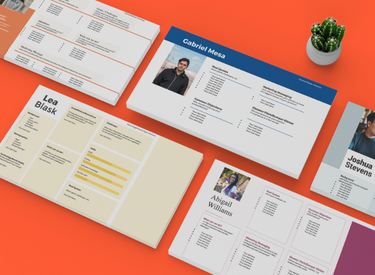

![The definition of a buyer persona [in under 100 words]](https://53.fs1.hubspotusercontent-na1.net/hubfs/53/Copy%20of%20Featured%20Image%20Template%20Backgrounds.webp)







